
How to Use SparkFun EL Sequencer: Examples, Pinouts, and Specs
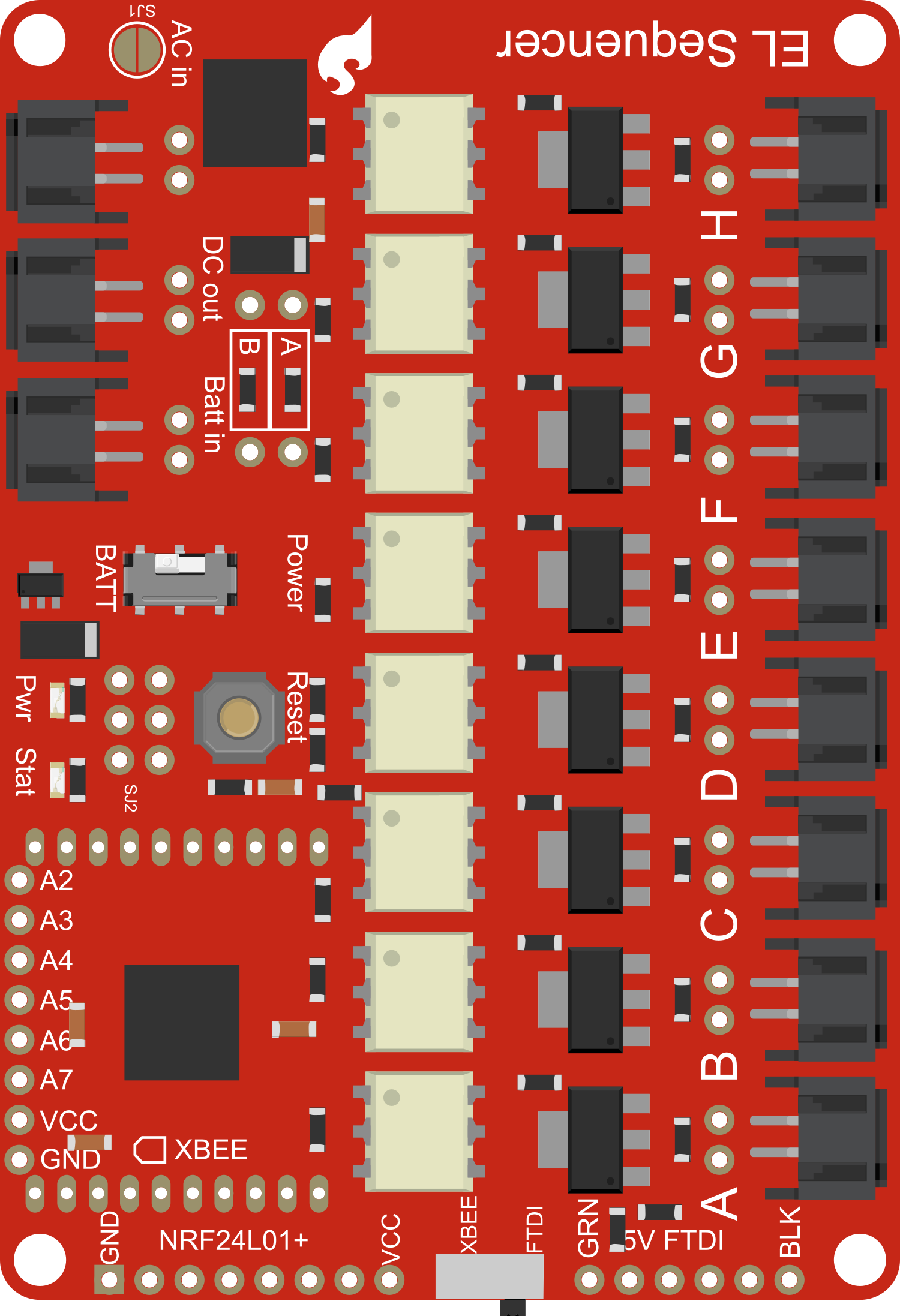
 Design with SparkFun EL Sequencer in Cirkit Designer
Design with SparkFun EL Sequencer in Cirkit DesignerIntroduction
The SparkFun EL Sequencer is a board designed to control the electroluminescent (EL) wire or tape, allowing users to create dynamic lighting effects for costumes, signs, displays, and more. It is based on the ATMega328 microcontroller, which is also used in the popular Arduino UNO, making it easy to program for those familiar with Arduino IDE.
Explore Projects Built with SparkFun EL Sequencer
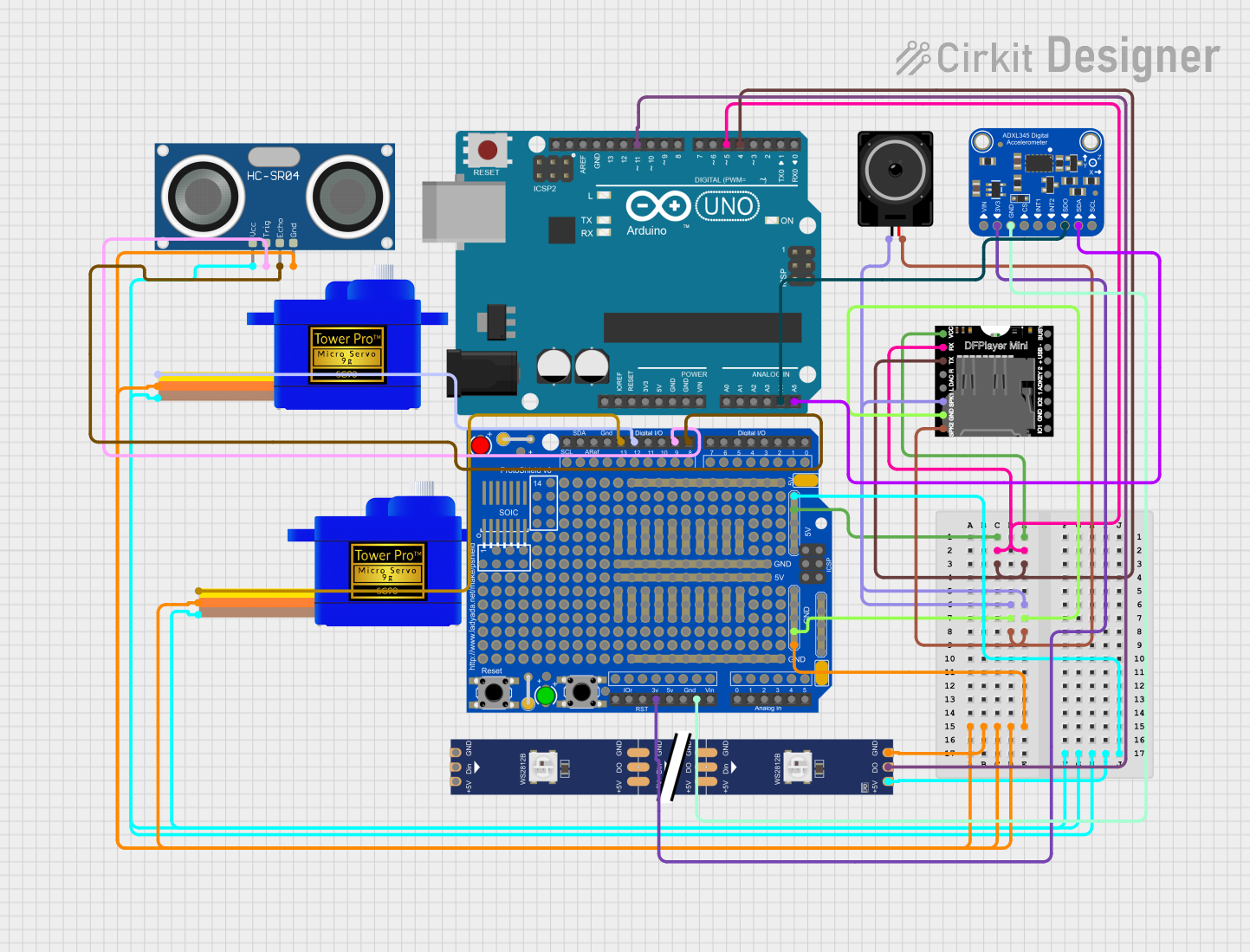
 Open Project in Cirkit Designer
Open Project in Cirkit Designer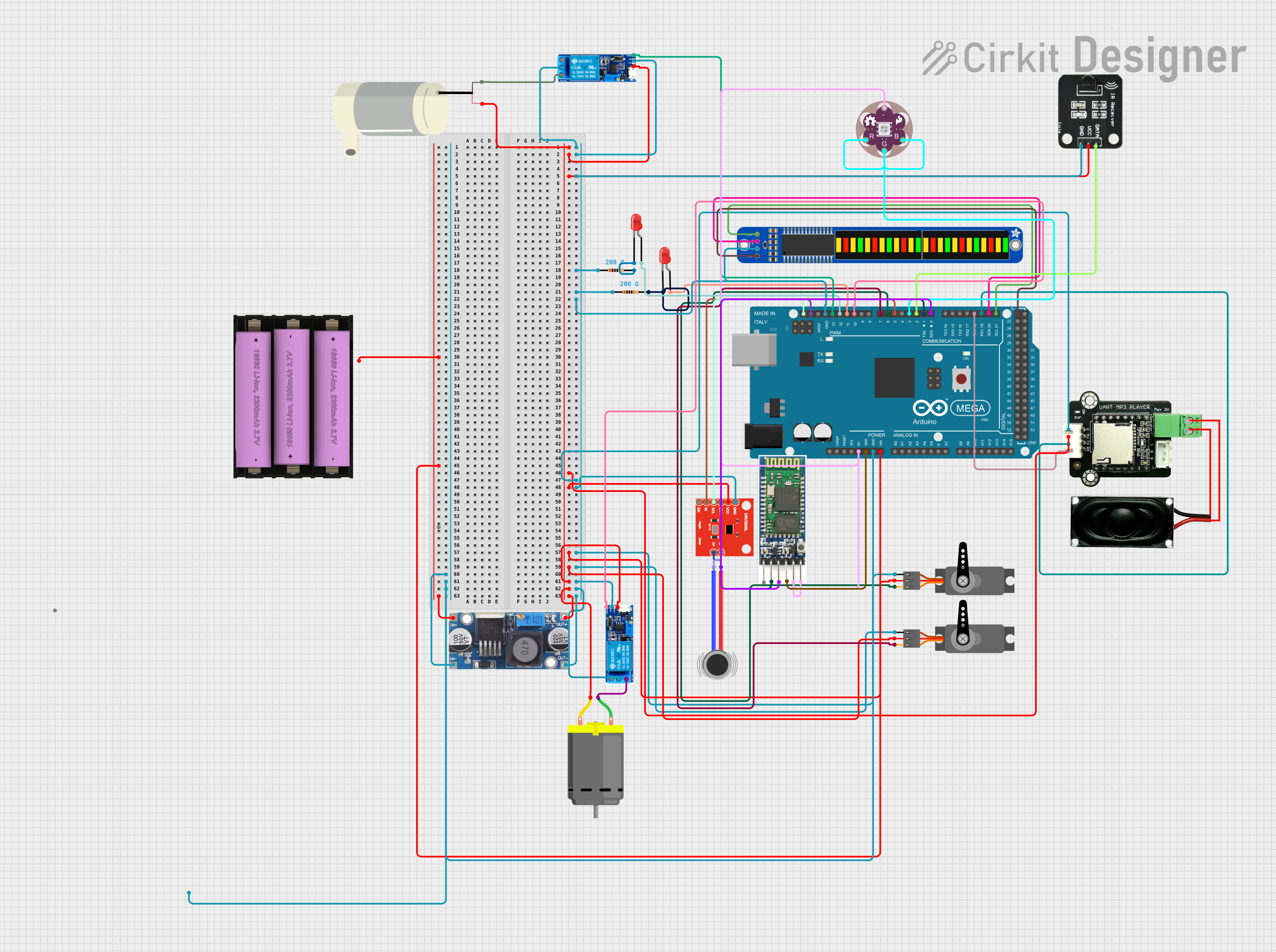
 Open Project in Cirkit Designer
Open Project in Cirkit Designer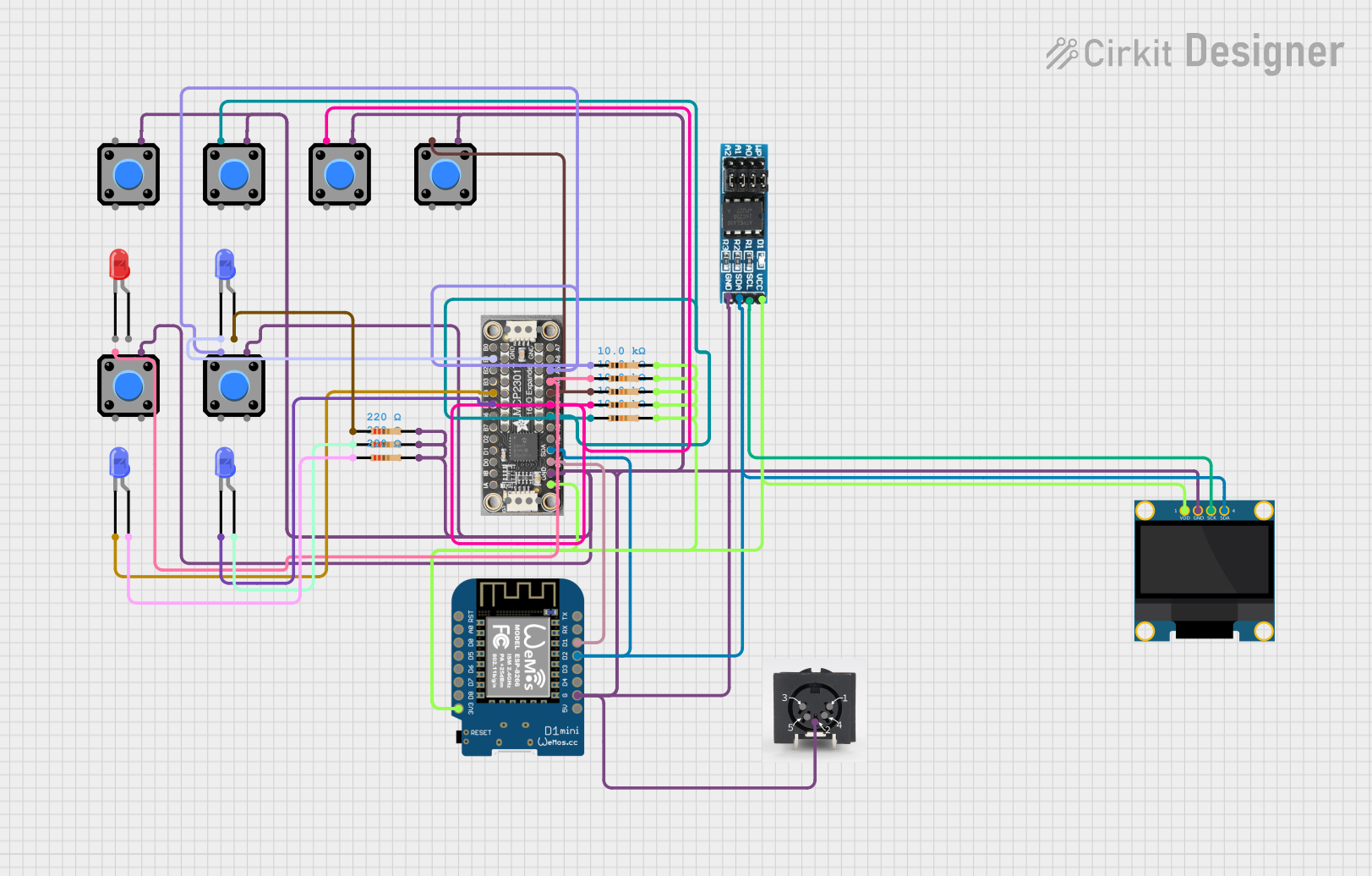
 Open Project in Cirkit Designer
Open Project in Cirkit Designer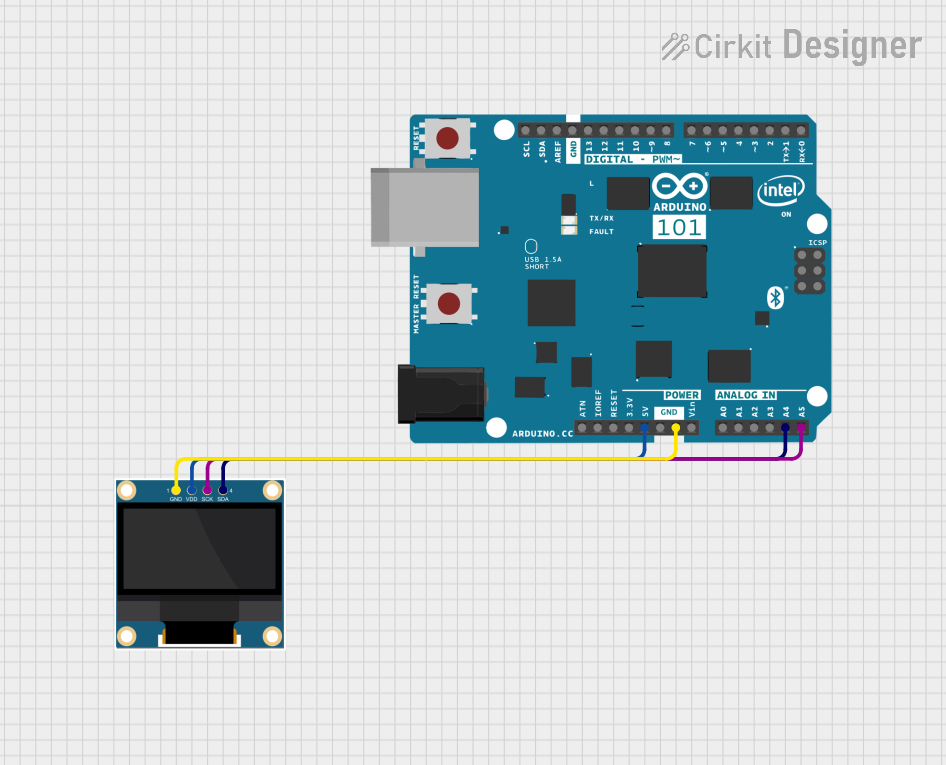
 Open Project in Cirkit Designer
Open Project in Cirkit DesignerExplore Projects Built with SparkFun EL Sequencer

 Open Project in Cirkit Designer
Open Project in Cirkit Designer
 Open Project in Cirkit Designer
Open Project in Cirkit Designer
 Open Project in Cirkit Designer
Open Project in Cirkit Designer
 Open Project in Cirkit Designer
Open Project in Cirkit DesignerCommon Applications and Use Cases
- Wearable electronics and costumes
- Dynamic signage and advertising
- Art installations
- Safety or emergency lighting
- Themed party decorations
Technical Specifications
Key Technical Details
- Microcontroller: ATMega328
- Operating Voltage: 3.3V
- Input Voltage: 2.7V - 5.5V
- Digital I/O Pins: 8 (with PWM capability)
- Analog Input Pins: 6
- DC Current per I/O Pin: 40 mA
- Flash Memory: 32 KB (ATMega328) of which 0.5 KB used by bootloader
- SRAM: 2 KB (ATMega328)
- EEPROM: 1 KB (ATMega328)
- Clock Speed: 8 MHz
Pin Configuration and Descriptions
| Pin Number | Function | Description |
|---|---|---|
| 1-8 | EL Channels | Drives EL wire/tape, PWM capable for dimming |
| A0-A5 | Analog Inputs | Can be used for sensors or potentiometers |
| RX | Serial Receive | Used for receiving serial data |
| TX | Serial Transmit | Used for transmitting serial data |
| RST | Reset | Resets the microcontroller |
| GND | Ground | Common ground for circuit |
| VIN | Voltage Input | Used to power the board with an external source |
| 5V | 5V Output | Regulated 5V output (when powered by VIN) |
| 3V3 | 3.3V Output | Regulated 3.3V output |
Usage Instructions
How to Use the Component in a Circuit
Powering the Board:
- Connect a power source to the VIN and GND pins for a 5V operation.
- Ensure that the power source does not exceed the recommended voltage.
Connecting EL Wire/Tape:
- Attach the EL wire or tape to the EL channel pins (1-8).
- Use the corresponding ground pin for the EL return path.
Programming the Board:
- The EL Sequencer can be programmed via the Arduino IDE.
- Select "Arduino Pro or Pro Mini" as the board type, with "ATmega328 (3.3V, 8 MHz)" as the processor.
Creating Effects:
- Use PWM on the EL channel pins to create dimming effects.
- Sequence the activation of different channels to create dynamic patterns.
Important Considerations and Best Practices
- Do not exceed the maximum voltage and current ratings to prevent damage.
- Ensure proper insulation of EL wire connections to avoid short circuits.
- Use appropriate resistors when connecting LEDs or other components to the I/O pins.
- Avoid running high-current loads directly from the board; use external transistors or relays.
Troubleshooting and FAQs
Common Issues
EL wire not lighting up:
- Check connections to ensure proper contact with the EL channel pins.
- Verify that the power source is within the specified voltage range.
- Ensure that the EL wire or tape is not damaged.
Board not responding to programming:
- Confirm that the correct board and processor are selected in the Arduino IDE.
- Check the USB to serial adapter connection.
- Ensure the drivers for the USB to serial adapter are installed.
Solutions and Tips for Troubleshooting
- Double-check all connections and solder joints for continuity and shorts.
- Use a multimeter to verify power supply voltages and pin outputs.
- Consult the SparkFun EL Sequencer forums and community for additional support.
FAQs
Can I power the EL Sequencer with a battery?
- Yes, you can power it with a battery within the 2.7V - 5.5V range.
How many EL wires can I connect to the board?
- You can connect up to 8 EL wires or tapes, one to each channel.
Is the EL Sequencer compatible with Arduino shields?
- While it shares the ATMega328 microcontroller, its form factor and pinout may not be directly compatible with all Arduino shields.
Example Arduino Code
// Example code to blink EL wire connected to channel 1
#include <SoftwareSerial.h>
// Define the EL channel pin
const int elChannel1 = 2; // EL channel 1 is connected to digital pin 2
void setup() {
// Set the EL channel as an output
pinMode(elChannel1, OUTPUT);
}
void loop() {
// Turn on the EL wire
digitalWrite(elChannel1, HIGH);
delay(1000); // Wait for 1 second
// Turn off the EL wire
digitalWrite(elChannel1, LOW);
delay(1000); // Wait for 1 second
}
Remember to wrap the EL wire connections with electrical tape or heat-shrink tubing to prevent short circuits and ensure safety. Happy lighting!